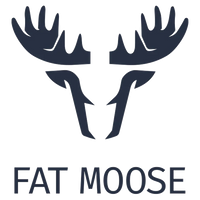Read this before you go off-piste
No matter how high the challenge some ski resorts provide on their on-piste runs is, it is never challenging enough for some daredevil skiers. These skiers crave more intensity and difficulty and don't mind putting their bodies and minds to the test. So they go off-piste!
Off-piste skiing refers to any type of skiing done far and beyond the groomed trails of a ski resort. When exploring off-piste terrains, there are often unstable snow conditions and landscape peculiarities such as deep snow, dirt, bumps, extreme slope, and chutes. The term off-piste is used interchangeably with backcountry to describe terrains that are beyond the borders of ski resorts.
If you are one of these exceptionally adventurous skiers who dream of leaving the conventional on-piste runs to lay new tracks down the off-piste slopes, you had better be prepared. Before you step onto these untamed trails, you must know what they demand and how these demands can be met.
Off-Piste skiing techniques
The right techniques are as important as having the necessary equipment when going off-piste. Due to the ungroomed nature of off-piste terrains, it may be more difficult for skiers to make quick turns.
Below are three skiing techniques that will help you navigate the steep slopes and unruly terrain off-piste.
The Blocking Pole Plant technique
The blocking pole plant technique is a skiing technique that prevents the movement of the upper body. It doesn't only assist in timing turns but also helps in making tighter turns down off-piste slopes.
With this technique, skiers can keep their upper bodies from accelerating downhill and turn tightly to maintain their speed on steep slopes.
Basics of this technique
- Poles plants are made on the inside of a turn
- It is essential to time your pole plant by setting the edges of your skis
- Place your downhill pole at an angle of 45 degrees to your skis and slowly push your hand down the hill while skiing around the pole, so you’re ready to plant the other pole with the other edge set for the next turn.
The Hop Turn technique
Some off-piste slopes are usually way too slim to manoeuvre with big arcing turns. Therefore, skiers who can perfectly pull off hop turns undoubtedly have no problems when faced with narrow chutes and gullies.
Basics of this technique
- Set the edges of your skis, and then plant your pole to make a turn
- Bend your knees to absorb energy
- Use the absorbed energy to burst out of the crouch and swing around the pole you planted.
- As soon as you land, plant your other pole, bend your knees and prepare to burst out again.
The Kick Turn technique
Kick turns are instrumental when navigating the steep slopes of off-piste terrains, and they are an effective way to change directions mid-air without having to first land. Skiers use this technique to get out of uneasy paths quickly.
Basics of this technique
- With your skis pointed to the sides, turn your upper body, so it faces downhill
- Take your downhill pole and place it uphill and behind you. Use both your poles and your uphill foot to stay balanced
- Lift your downhill ski with a kick until your foot is in the other direction.
- Move your weight onto that downhill leg to find a balance
- Bring your uphill ski and pole around to match your other ski and pole.
- Turning around to face the other direction changes the uphill ski to the downhill ski.
Off-Piste skiing essentials
Off-piste skiing is an entirely different ball game from regular skiing. Venturing beyond the borders of a ski resort and into the backcountry for some off-piste skiing means that you understand that you are responsible for your wellbeing.
To be prepared for whatever may come your way, here are a few essentials to put into consideration when going off-piste:
Avalanche safety and gear
Since off-piste trails are not maintained by the ski resort management, avalanches can be a big concern to skiers. Therefore, you must be adequately trained in understanding avalanches and how to avoid avalanche terrains.
Skiers are advised to take at minimum a level one avalanche course certified by a renowned avalanche research and education institute before heading for the wild backcountry trails.
Here is a list of safety gear you would need to take along with you in case of an avalanche:
- Avalanche airbag
- Avalanche beacon/transceiver
- First-aid
- Probe
- Snacks and water
- Snow shovel
Other freeride equipment
On-piste and off-piste skiing typically require freeride equipment. Although this equipment may change depending on where and when you’ll be skiing, here are the essential ones for off-piste skiing.
- Helmet
- Waterproof clothing
- All mountain and freeride skis
Conclusion
When going off-piste, there are several irregularities a skier can encounter in the terrain. This makes navigation through trails a lot more tricky, requiring a lot of experience, practice, training, and courage.
Fat Moose is a great companion to the ardent adventurer. We make outerwears that provide durability, comfort, and utility to those who are willing to go the extra mile. Whether you're into the urban or outdoor lifestyle, get in touch with us, and let's make your life an adventure.


